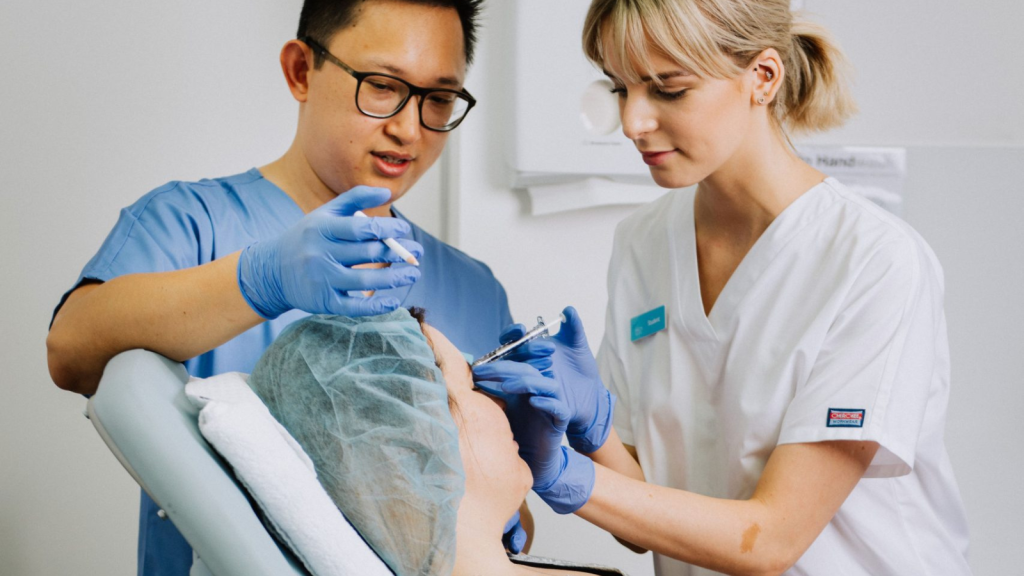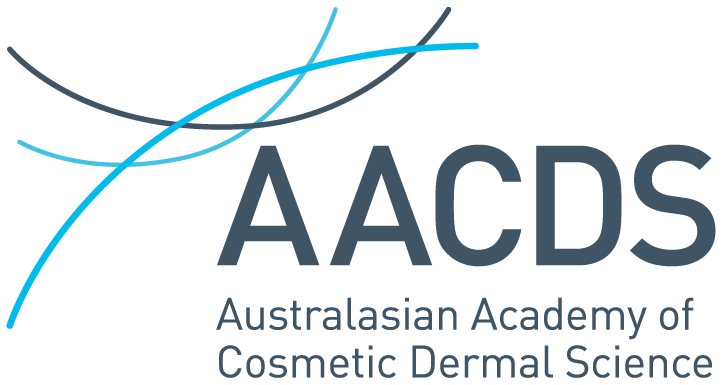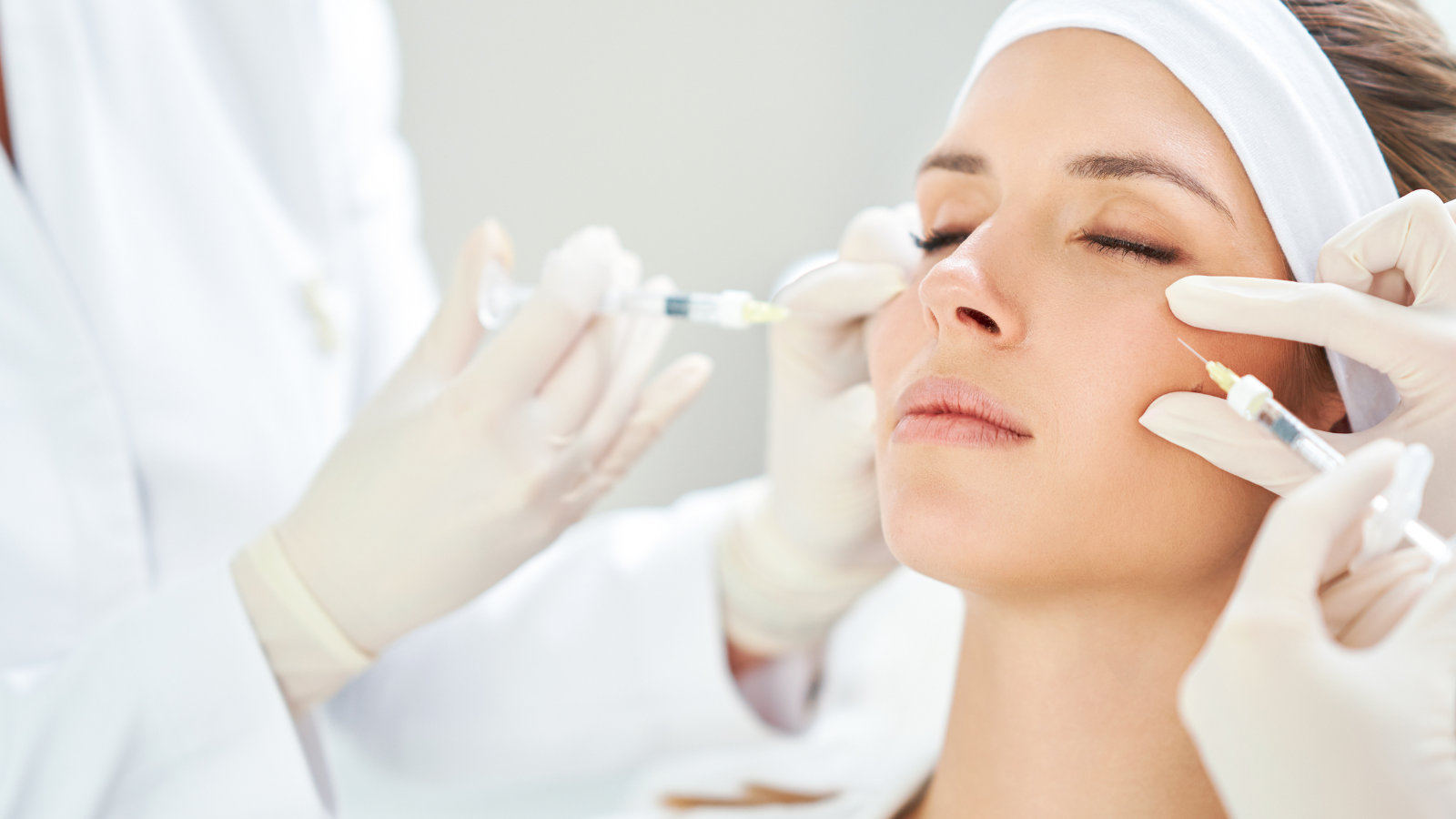Why qualifications matter in cosmetic industry regulations and patient safety

The Australian cosmetic industry is facing some of the biggest changes we’ve seen in years. New regulations are being rolled out, and there’s a growing focus on ensuring practitioners have the right training to keep patients safe. Thankfully, the days of unclear qualifications and misleading titles are coming to an end, and this means accredited education is now more important than ever.
In this article, we’ll break down what these new regulations mean for practitioners and patients, why proper training is essential, and how accredited courses like ours at AACDS can set you up for success in this growing $1.5 billion industry. We’ll also explore the risks of inadequate training, the difference between accredited and non-accredited courses, and what to look for when choosing a cosmetic education provider.
Still unsure how these changes might impact your career or the treatments you’re considering? Let’s smooth out the details together—by the end, you’ll have a clear understanding of what’s happening in the industry and why choosing the right training makes all the difference.
Cosmetic regulations Australia: what’s changing?
One major shift is the restriction on who can use the term ‘surgeon’. This change helps clear up confusion for patients and stops unqualified practitioners from using titles that might make them sound more experienced than they really are! New AHPRA guidelines are also on the way, setting higher standards for non-surgical cosmetic procedures to make sure patients get the safest possible care.
How new occupation classifications could impact your career
Recent updates to the Australian and New Zealand Standard Classification of Occupations (ANZSCO) and the Final Occupation Standard Classification for Australia (OSCA) have introduced clearer distinctions between Beauty Therapists and Dermal Therapists. While these changes are not yet tied to regulation, they signal a shift toward more defined scopes of practice and qualification pathways within the cosmetic and aesthetic industries.
Under these new classifications:
- Beauty Therapists are now classified at Skill Level 3, aligned with Certificate III, Certificate IV, or at least three years of experience. Their scope includes general beauty treatments like facials and waxing.
- Dermal Therapists fall under Skill Level 2, requiring a Diploma, Advanced Diploma, or Associate Degree, or equivalent experience, with a recognised scope that includes advanced treatments like laser, IPL, and chemical peels.
While there are no immediate changes to regulation, these updates highlight a shift toward more defined qualification pathways, which may impact training requirements, insurance, and job roles in the near future. For a deeper breakdown of these changes, The Aesthetic & Beauty Industry Council (ABIC) has released a full summary, available on their website.
What does this mean for you? Investing in accredited, dermal-focused education—like the nationally recognised qualifications offered by AACDS—places you ahead of these changes, ensuring your scope of practice is future-proofed and recognised within evolving industry standards.
Until now, there hasn’t been a set-in-stone standard for training in cosmetic procedures. That means some practitioners have been offering treatments without the right skills, leading to poor results and, in some cases, serious harm. Accredited training addresses this by ensuring that every practitioner meets high safety and competency standards before working with patients.
The risks of cutting corners
Without proper training, things can go wrong—fast. There have been cases where patients suffered because their practitioners didn’t have the skills to handle complications. Misleading advertising has also played a role in this skills gap, with some courses promising ‘fast-track’ qualifications that don’t meet industry standards. When it comes to cosmetic treatments, a regulated education pathway isn’t just important—it’s essential.
Why cosmetic industry accreditation matters
Now more than ever, accredited training is the key to protecting both patients and practitioners. Here are the differences between an accredited and non-accredited course.
Accredited courses
- Recognised nationwide: These courses meet the Australian Qualifications Framework (AQF) and Registered Training Organisation (RTO) standards.
- Industry compliance: They align with AHPRA and Medical Board guidelines, so graduates are legally and ethically prepared.
- High training standards: Competency-based learning ensures graduates are properly assessed before they start working.
- Better career opportunities: Completing an accredited course can open doors to better jobs, insurance and professional memberships.
- Insurance and licensing: Many insurers won’t cover practitioners without accredited training, making it essential for those wanting to work legally.
Non-accredited courses
- No national recognition: These are often created by private companies without industry oversight.
- Risk of non-compliance: Some don’t meet AHPRA or Medical Board standards, leaving students unprepared.
- Limited job prospects: Employers and insurers may reject non-accredited qualifications.
- Inconsistent quality: Without regulations, course content can vary wildly, putting both practitioners and patients at risk.

Why study with AACDS?
AACDS has set the standard for accredited cosmetic training in Australia. As an RTO, we don’t just meet industry requirements, we help shape them. Our courses are designed with real-world practice in mind, giving students hands-on experience and up-to-date knowledge on regulatory changes.
A comprehensive and continually updated cirriculum
AACDS offers a comprehensive curriculum that aligns with industry needs and shifting regulatory requirements.
One of our key advancements is the unit ‘CDNEIP02 Evaluate and Perform Cosmetic Injectable Procedures’—the first nationally accredited unit covering both the theory and practical skills associated with dermal fillers and wrinkle relaxants. This unit ensures students gain the most up-to-date knowledge and hands-on training, meeting the latest safety and competency standards.
Recently, we’ve made a number of changes to our courses to align with regulatory updates, including:
52923WA Advanced Diploma of Cosmetic Dermal Science:
- Medical Terminology (BSBMED301): This new unit helps students build confidence in using medical and aesthetic terminology, ensuring they can communicate effectively with peers, clients and industry professionals.
- Diet and Nutrition (HLTHPS010): A growing number of cosmetic procedures consider overall skin health and wellness. This unit provides a foundational understanding of how nutrition can impact skin conditions and aesthetic outcomes.
- Hands-On Training in RF Skin Needling: The curriculum now includes radiofrequency (RF) skin needling using technologies like Potenza and Vivace, ensuring students graduate with the latest skills in non-invasive rejuvenation techniques.
52919WA Graduate Diploma of Cosmetic Nursing and Injectables:
- Expanded practical training in Skin Boosters: With an increasing demand for injectable skin treatments, we’ve integrated hands-on training with skin boosters, giving students experience in the latest rejuvenation techniques.
- RF Skin Needling as part of the Dermal Science Practical component: This ensures that graduates have advanced knowledge in energy-based cosmetic treatments, complementing their injectables expertise.
52920WA Graduate Diploma of Dermal Science:
- Enhanced RF Skin Needling training: As energy-based treatments continue to dominate the industry, we’ve expanded our RF skin needling curriculum to include advanced techniques for improving treatment outcomes, allowing students to deliver more effective results for their clients.
To find out more about all of our course inclusions and benefits, visit the AACDS courses page to find the right fit for your career.
Hands-on training
At AACDS, we know cosmetic training isn’t just about theory—it’s about gaining real, practical experience in a clinical setting. That’s why our dermal science courses include a minimum of 76 hours of practical training delivered during an immersive two-week, full-time block at our state-of-the-art Aspire Training Clinics.
Students undertaking the cosmetic injectables practical training will also complete an additional four days of intensive, hands-on instruction.
Training is conducted under a 2:1 student-to-trainer ratio, providing constant supervision and personalised guidance from qualified dermal therapists, cosmetic nurses and/or doctors. This ensures a safe learning environment and the highest standard of practical skill development.
With Aspire Clinics located in Perth, Melbourne, Sydney and the Gold Coast, students graduate confident, competent, and ready to step into industry with real-world experience.
Cosmetic regulations Australia: learning from the best
AACDS actively collaborates with a vast network of suppliers, industry associations, regulatory bodies and employers to ensure that course content remains relevant and meets the latest industry standards. Led by Brad Low, General Manager of Education, this method ensures students graduate with practical, up-to-date skills that align with real-world industry demands.
Our faculty includes highly experienced professionals who are passionate about educating the next generation of cosmetic practitioners:
- Dr Keturah Hoffman (MBBS, Fellow CPCA) – Unit Coordinator for Cosmetic Injectables, with a wealth of experience in cosmetic medicine.
- Ekta Tandon (MSc RN) – Course Coordinator for the Advanced Diploma of Cosmetic Dermal Science and the Graduate Diploma of Dermal Therapies, ensuring course quality and alignment with industry needs.
“At AACDS, we’re committed to staying ahead of legislative changes, providing guidance and support to our community. Through continuous updates and educational resources, we help students and graduates navigate the complex regulatory landscape, ensuring that they lead the field of cosmetic medicine with confidence and integrity," says Brad.
Start your career with our industry-accredited courses today
The cosmetic industry is changing, and there’s no room for guesswork when it comes to patient safety. If you want to build a career in this field, choosing an accredited course is the smartest move. Want to know more? Download our Course Prospectus or chat with one of our friendly Course Consultants to explore enrolment options, payment plans and study pathways.


